by Wallace Wyss –
Recently I looked at an article on the original Ghibli and was struck by how, from the side view, the car still looks contemporary. And this is amazing considered next year it will be 50 years old!
The marque goes back to 1914 when the Maserati brothers built early Grand Prix cars. In 1926 they formerly founded the Maserati marque and won the Targa Floria that year.
Sadly, during a down time in the car business they sold out to the Adolfo Orsi family in 1937 but the Orsi family, to their credit, kept the legend going; supporting race car design and building and fielding race cars, but more important to today’s owners, developing GT cars.
Achievements include participation in the Indy 500 and Argentine driver Juan-Manuel Fangio taking the world championship in 1957. Up to a certain point, they were the exotic you thought of when you thought “Italian sports car.” But gradually that upstart Ferrari (who started building cars in 1949) intruded, and took much of Maserati’s market away.
GIUGIARO’S TRIUMPH
Whatever it would have taken, Nuccio Bertone should have hung onto Giorgetto Giugiaro, a lad he had hired when Giugiaro was only 19. But he couldn’t. Maybe Giugiaro felt imprisoned, because in those days the head of the firm, in this case Nuccio Bertone, took credit for designs coming out of Bertone. So Giugiaro left for Carrozzeria Ghia.
His Ghibli, named after a Sahara desert wind, was designed to be a low slung coupe, using the Maserati four cam V8 engine coupled to a ZF 5-speed. The whole idea was grand touring and it was luxuriously appointed so one could be comfortable wafting across the Continent at 100 mph.
The world first saw it at the 1966 Turin Motor Show where it single handedly vaulted the Maserati in terms of styling into the modern “flat panel” era, seemingly a car decades ahead of the 3500GT.
The Ghibli was good competition against the Ferrari Daytona and the Lamborghini Miura.
Having a dry sump for the engine allowed it to have a lower hoodline. To get that low look it also had pop up headlamps.
The original 4.7 liter engine was a 310 horsepower liter V8. Like the Daytona, it had two barrel carbs, four of them where the Daytona had six. A later version displaced 4.9 liters and was rated at 335 hp. That was the SS model.
The magazines of the time quoted its speed capabilities at 0-60 MPH under 8 seconds with a top end of 154 MPH, alas that as much as 20 MPH under the Daytona and the Miura. Other sources say 168 MPH was reachable. One factory quote says 174 MPH, ironically identical to the Daytona’s claim.
Though it had some modern things on the drive train like four-wheel disc brakes, a double wishbone suspension, coil springs and an anti-roll bar up front, the rear suspension was antique with a live rear axle suspended by elliptic leaf springs, antique compared to the rival Daytona.
It was a fairly greedy V8 and you had to have twin 13-gallon fuel tanks –which you accessed through flaps on the roof pillar—to have enough gas for that long Continental tour.
The car came along just when there was a changeover in the Italian exotic car industry from wire wheels to knock off mags. Though wire wheels were an option, the Campagnolos seemed to be more modern.
The Spyder was a clean design, though some might miss that it didn’t have the old fashioned “top stack” when the top was folded (like a Jensen Interceptor convertible). No, its top was more modern, folding under a metal lid that seems too thin. There was a detachable hardtop available.
The Ghibli was around $16,900 when new, a couple thousand under the Daytona. It lacked the rub off glamor of the Daytona having a competition version, but Maserati thought they didn’t need it—they were going for the grand touring market only, not the boy racers. (Ironically just the fact that there were Comp Daytonas means, almost 50 years later, that Daytonas have a higher resale price than Ghiblis).
Daytona owners can occasionally allude to the fact their car has a “Comp” engine or parts from a Comp Daytona while Ghibli owners can’t say that.
RARITY
I like to postulate my own theory that 1,000 units is the magic number for appreciation. If you get too far beyond that, there are too many for the car to be guaranteed appreciation. The Iso Grifo for instance is under 500 cars. The Ferrari Daytona under 1,200. The Mangusta under 500 and so forth. The Ghibli is just above my “magic number” at 1,149 examples made from 1967 through 1973.
The Spyders are much more rare with only 125 built, very similar to the number of Daytona Spyders built over at Ferrari.
DESIGN CRITIQUE
Overall the Ghibli, even by 2016 standards, is a stunning design, having the advantage, in retrospect, of having been developed before the US bumper laws required huge and heavy bumpers. It was a shining star in the “swan song” period before the government weighed in on car design so much.
FRONT
The grille surround is a thin line of chrome, very tasteful. The Maserati trident insignia is nicely poised there, without being lost against a garish grille. The bumper guards offer minimal protection but are better than nothing. I would have preferred the hood spear to continue onto the metal ahead of the liftable bonnet, like the ’63 Corvette.
SIDE
The car’s best view. The long long hood says “power” and the cabin very nicely ends in a fastback with one curved line. The side vents are a Giugiaro trademark, but not overdone in this car. The upward cant of the body lines for the rear 3/4 window add that bit of privacy, and also highlight the rear wheelwells, giving that area a more powerful look. The vents in the roof besides housing the lids for the gas cap are very subtle, they do the job but don’t scream for attention. To show you how “tight” this design was, if you imagine it without those vents, it is too plain a design.
REAR
The taillights are rather plain, and may have even been sourced from some existing car. The inward slant to the chopped-off tail is subtle but matches the angle of the inward slant of the front grille area, giving you the idea that everything has been done to reduce body mass to only what’s necessary. The vertical bumperettes look way too small to protect the car in a parking situation, almost like “toys,” I wouldn’t run them.
THE INTERIOR
This car has a sensibly laid out dashboard, one copied by Pontiac in the Trans Am years later—two big gauges, and a flock of identically sized little ones all in a row. With a row toggle switches, and mind you, nothing says “Only I know the mystery of this car” than a row of toggle switches.
IN SUM…
I see nothing but upside potential for the Ghiblis, especially when Ferrari Daytonas are fast approaching anywhere from $400K to $1 million. Though I don’t like the name Ghibli being reintroduced for a less dramatic modern offering, the name Ghibli gets more recognition by the existence of the new car so it is becoming known to a new audience, the third generation so to speak since the car was introduced a half century ago.
Let us know what you think in the Comments.
THE AUTHOR: Wallace Wyss is a fine artist whose work will be on display at Concorso Italiano in Monterey. He is the author of the Incredible Barn Finds books published by Enthusiast Books ((715) 381 9755
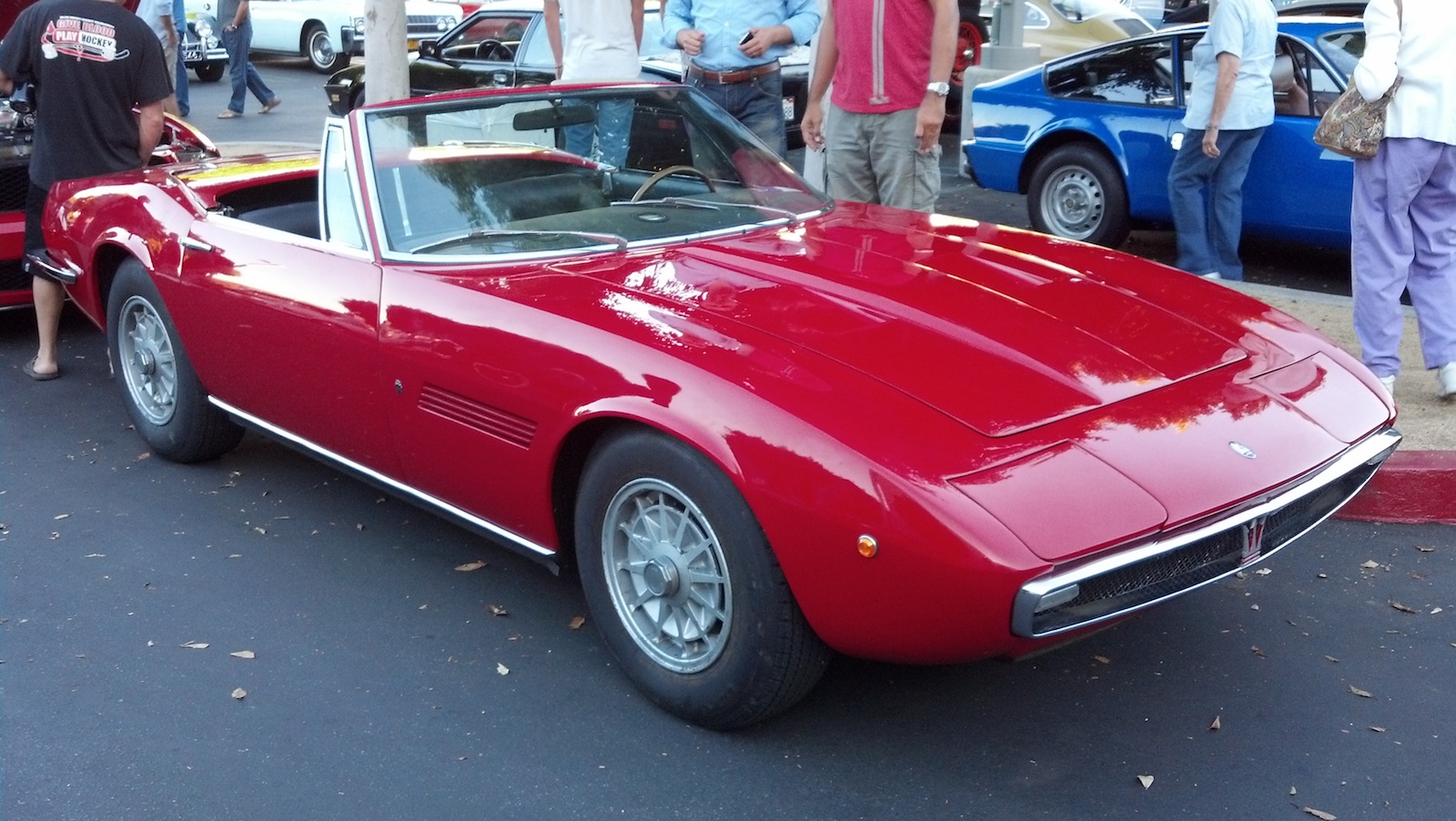
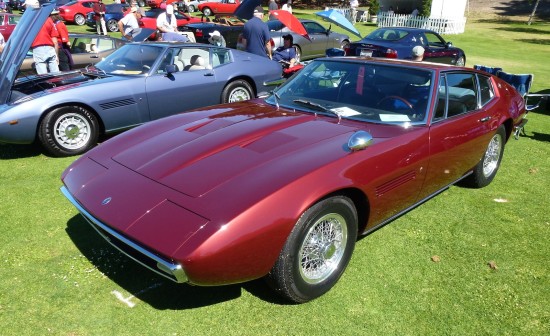
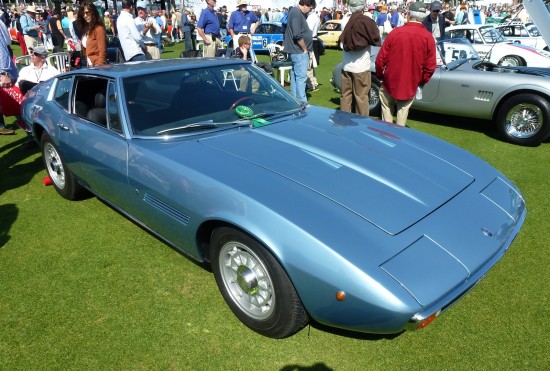
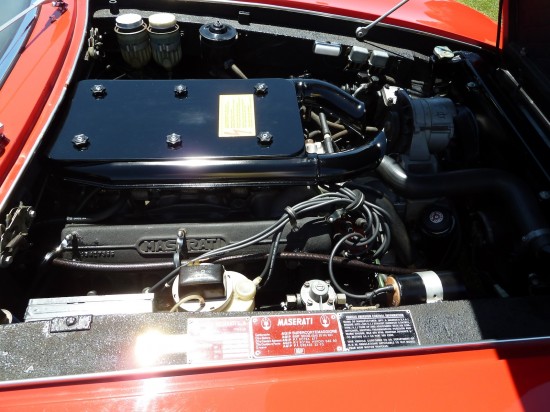
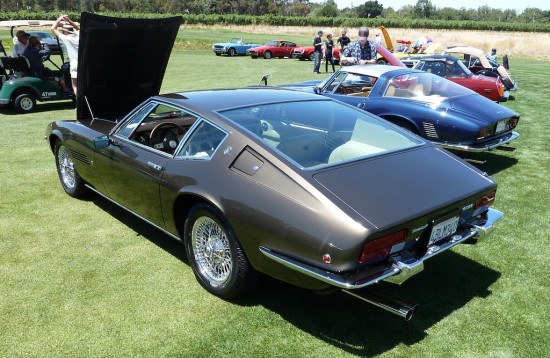
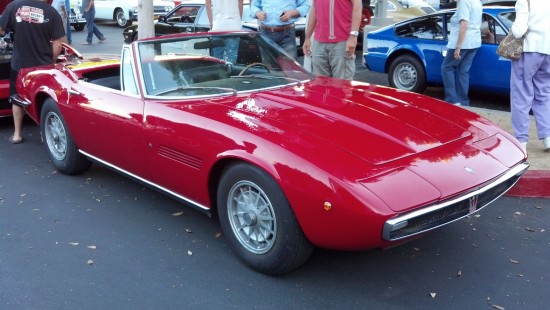
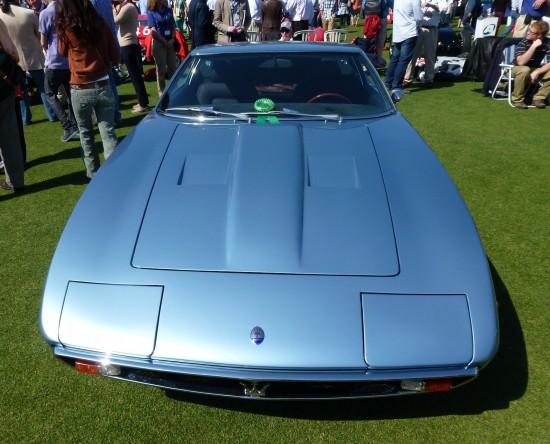

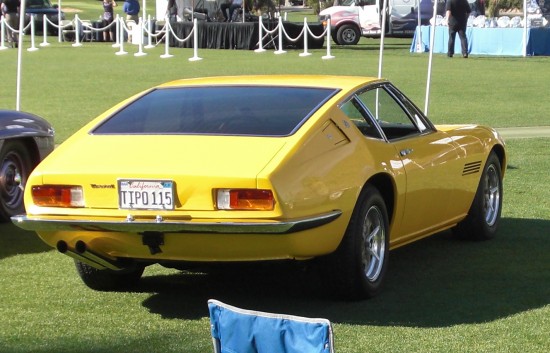
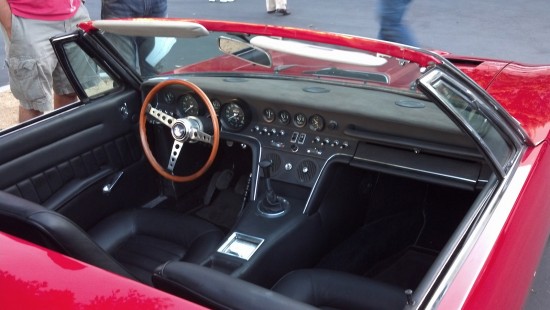
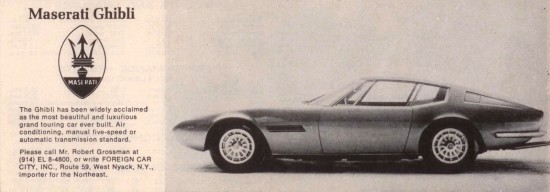
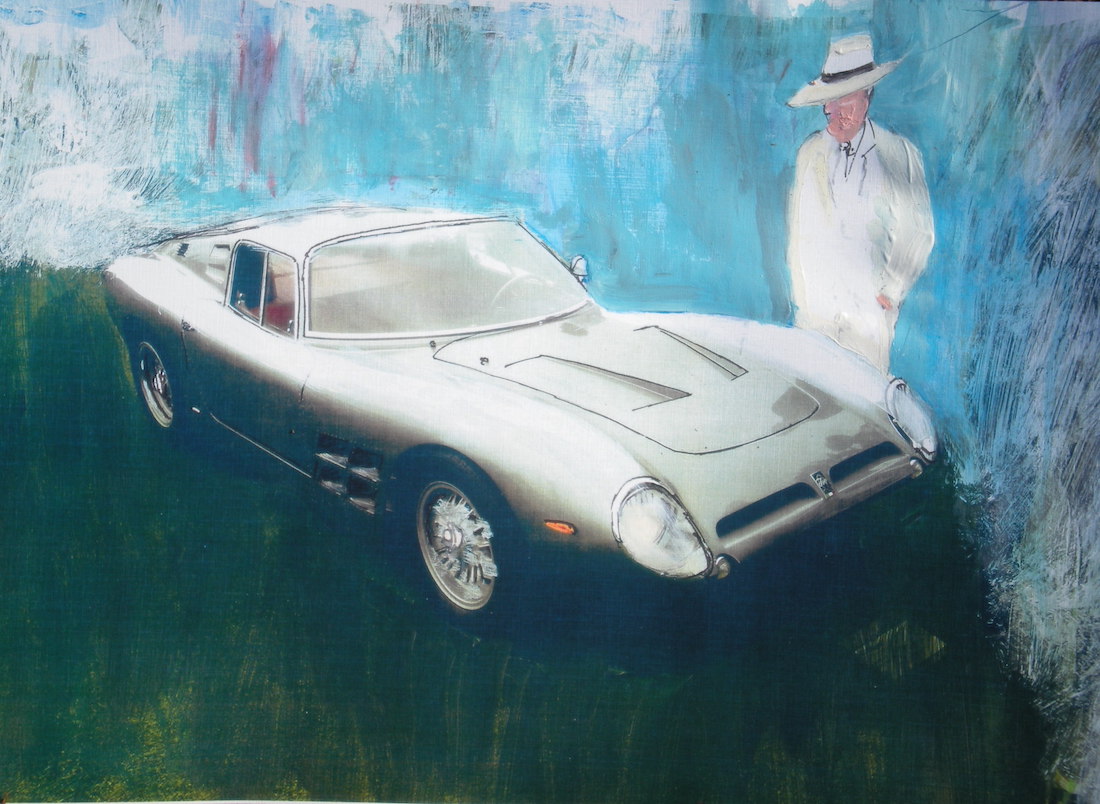

Excellent work as usual Wallace. I could not agree with you more about the magnificence of this design. However, had Bertone retained Giugiaro we would have never known the equally amazing work of Gandini, to whom much credit must be given for a great deal of the body of Bertone creations.
Though seldom discussed, some of the motivation behind Giugiaro’s departure had to do with his feeling there was some doubt by Bertone in Giugiaro’s long term future. Bertone had seen some work from Gandini (a total novice) brought in by Bertone for consideration to expand his growing business. Giugiaro would have nothing of it, leaving only a few weeks after the incident. Perhaps coincidental but with other factors at play and Giugiaro feeling he was capable of much more than what Bertone was offering, his departure opened the door for Gandini.
The Ghibli was one of the seminal “folded paper” designs that lead Italians out of the former rounded form cars into a new era of vehicle design.
I think Giugiaro stepped from the frying pan into the fire at Ghia. He probably didn’t know
what a mercurial and mood-swinging guy DeTomaso was and found out fast. Still I have to
give DeTomaso credit for letting him do the production Mangusta so close to the prototype. The amazing thing is that both cars represent almost a high point in Sixties design, the Ghibli for the front engine GTs and the Mangusta for the mid-engine ones and yet from two different carrozzerias in a close time period. That one designer could nail both configurations with timeless designs is a real tribute. I still wish the Ghibli spyder had an old fashioned “top stack” with a snap on boot as that flat one always looks incomplete to me.
Just a quick addition :
I was lucky enough to put my hand on a French barnfind 4 years ago. It was in this 2nd Owner’s hands for nearly 40 years, w/ only 49.500 km. Engine… were never opened.
A unique 70′ SSS. SS Speciale as mentioned on the Thépenier files.
Fully certified by the Factory since.
It’s got a very powerful Factory modified engine and rear diff (and many other mods – lightened…)
Maybe an “avant-goût” of what could have been a “comp” version ?
It was charged by the Factory 70% more than the normal price-list to his 1st Owner,Mr Ph. Cornet-Epinet (the mechanic who bought back the Bora Gr.4 projects).
It was ordered too w/ a 4 valves engine, but I have the original answer from the Factory (and signed by Orsi) that they would not follow up this particular request.
I’m putting an end to its Concours cond. restoration.
PS: you also could have mentionned that only 305 SS coupés have been built.